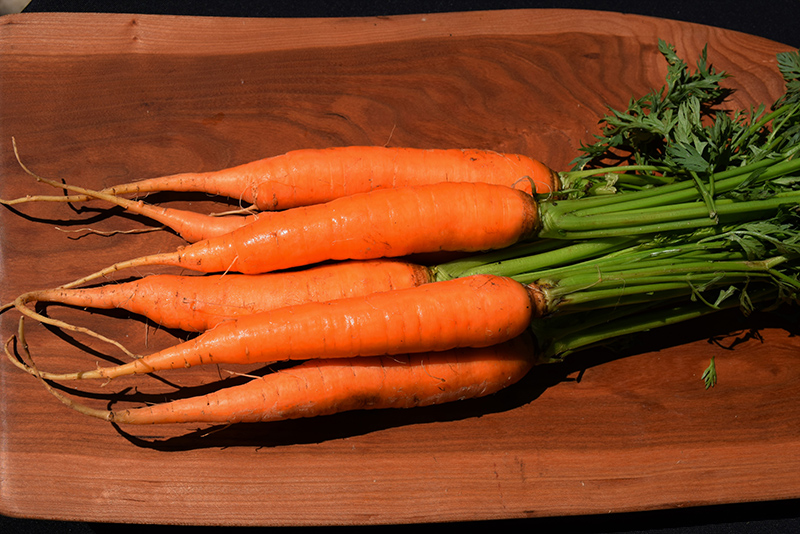Plant Finder
Adelaide Carrot
Daucus carota var. sativus 'Adelaide'
Height: 12 inches
Spacing: 2 inches
Sunlight:
![]()
Hardiness Zone: (annual)
Description:
An early maturing, nantes variety; ideal for patio containers, raised beds and gardens; a true baby carrot, only 4" long, nearly coreless, dark orange roots; delicious sweet flavor and crunchy texture, great for eating raw, salads, pickling or cooking
Edible Qualities
Adelaide Carrot is an annual vegetable plant that is commonly grown for its edible qualities. It produces small orange long roots with orange flesh which are harvested from mid summer to mid fall. The roots have a sweet taste and a crunchy texture.
The roots are most often used in the following ways:
- Fresh Eating
- Cooking
- Baking
- Pickling
- Freezing
Planting & Growing
Adelaide Carrot will grow to be about 12 inches tall at maturity, with a spread of 6 inches. When planted in rows, individual plants should be spaced approximately 2 inches apart. This vegetable plant is an annual, which means that it will grow for one season in your garden and then die after producing a crop. Because of its relatively short time to maturity, it lends itself to a series of successive plantings each staggered by a week or two; this will prolong the effective harvest period.
This plant is typically grown in a designated vegetable garden. It should only be grown in full sunlight. It does best in average to evenly moist conditions, but will not tolerate standing water. It is not particular as to soil type or pH. It is somewhat tolerant of urban pollution. This is a selected variety of a species not originally from North America.; however, as a cultivated variety, be aware that it may be subject to certain restrictions or prohibitions on propagation.
Adelaide Carrot is a good choice for the vegetable garden, but it is also well-suited for use in outdoor pots and containers. It is often used as a 'filler' in the 'spiller-thriller-filler' container combination, providing the canvas against which the larger thriller plants stand out. Note that when growing plants in outdoor containers and baskets, they may require more frequent waterings than they would in the yard or garden.




